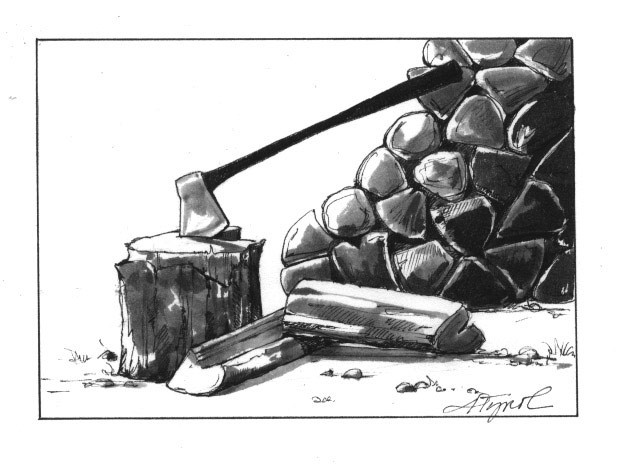
The other day I was loading the last of the firewood into the woodshed when a friend stopped by. “Looks like fun,” he said. I happened to know that he himself was not a wood burner, and, judging from the tone in his voice, I gathered he had not become one overnight. So I skipped the usual blather about the virtues and advantages of wood burning and went straight for the jugular.
“Burning wood doesn’t add to global warming,” I said, knowing full well that he considered himself something of an environmentalist and was loath to be outflanked on the issue. So off we went.
A common misconception is that, because carbon dioxide in the atmosphere causes global warming, and because burning wood adds carbon dioxide to the atmosphere, burning wood, therefore, also contributes to global warming. But that’s not so. From a chemical perspective, all carbon dioxide is created equal. But from an ecological perspective, the source of the carbon dioxide is all important.
Global warming is being caused by “the greenhouse effect” – a description of the dual role that carbon dioxide plays in regulating our climate. Much like the panes of glass in a greenhouse, carbon dioxide lets in more of the sun’s energy than it lets out. Light tends to pass through while heat tends to be trapped. Adding more carbon dioxide to the atmosphere is akin to adding more layers of glass to the greenhouse – the temperature inside goes up.
But what if, instead of adding more panes to the greenhouse roof, you were simply swapping one pane for another? Putting one up and taking one off? The temperature inside would not rise. And that’s the case with burning wood.
The carbon found in wood (and, indeed, in every living thing) is part of the earth’s biosphere, that combination of the earth’s crust and atmosphere where organisms live. Carbon in the biosphere is continually cycling between the air and the earth – entering the atmosphere as carbon dioxide when an old tree decays (or is burned) and being removed from the atmosphere as a tree grows and incorporates the carbon into new wood. Burning firewood for heat fits into this ongoing cycle and is, therefore, akin to swapping glass panes on the greenhouse roof – we add some carbon dioxide to the atmosphere during burning and we subtract some out as the woodlot re-grows. But there is no net increase.
This is particularly true in our corner of the world, where tree growth has exceeded tree harvesting for the last century and a half. As upland fields and farms have reverted to forest since the end of the Civil War, for every tree cut down to heat our houses in Vermont and New Hampshire, more than one has grown in to take its place.
The carbon found in fossil fuels, on the other hand, is not part of the biosphere and is not part of this biological carbon cycle. Fossil fuel carbon was locked up in the crust several hundred million years ago at a time when there was far more carbon dioxide in the atmosphere than there is today (and when the earth’s temperature was significantly warmer than it is today). Removing this carbon from the ground and releasing it into the air is causing a net gain of carbon dioxide into the atmosphere and slowly returning us to those prehistoric (and less hospitable) conditions. Only if we could somehow remove this extra carbon from the atmosphere and somehow re-inject it into the ground could we burn fossil fuels without increasing the earth’s temperature.
Take the example of a juggler who is managing to keep a dozen tennis balls in the air. Suddenly a bystander starts lobbing additional tennis balls into the ring. Eventually, the juggler can’t keep up and starts dropping the balls. It isn’t the tennis balls themselves that are causing the problem, it’s the extra tennis balls. Similarly, it isn’t carbon dioxide molecules (the tennis balls) that are causing global warming, it’s the extra carbon dioxide molecules lobbed in from burning fossil fuels. The carbon dioxide molecules released from burning firewood are already part of the juggler’s original dozen.
Back at my woodshed, I’m pleased to say that my friend and I parted on good terms, though he did become distracted during the conversation, and I believe he ended up stacking more of my wood than he had intended. Afterwards, I realized that Henry Thoreau had it only half right when, writing at the dawn of the fossil fuel age, he pointed out that wood warms you twice: once while you’re burning it and once while you’re putting it up. He forgot to mention that it won’t warm you a third time.


Discussion *